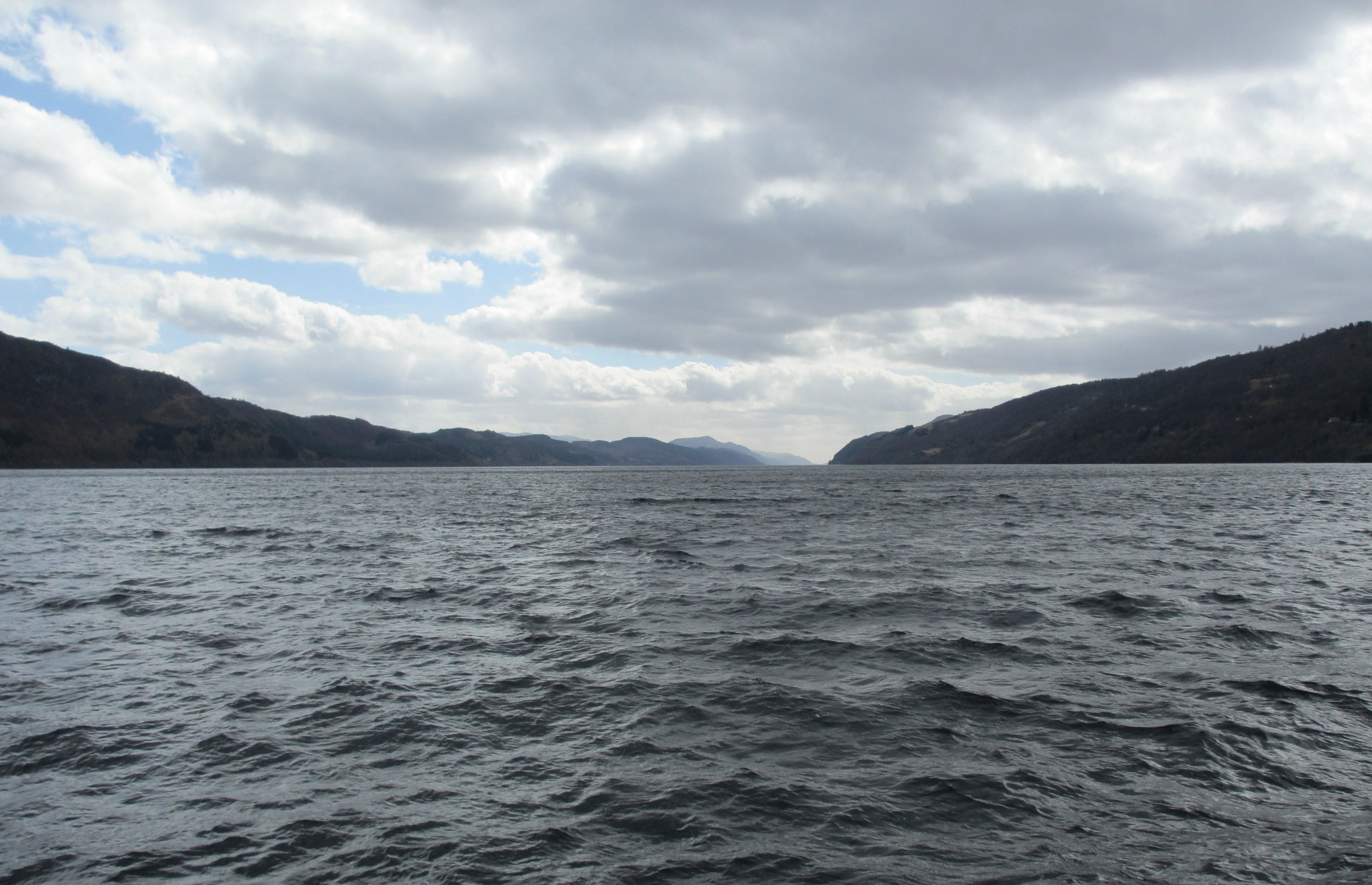How the Legend of Loch Ness was Born

We take you to cities; we show you some of the most amazing museums and monuments known to man. We will do our best to bring alive everything from ancient Greece to the Renaissance in Italy to events of modern history. We will aim to introduce you to the everyday necessities of the place you are visiting (the patisseries of France or fish and chips at the Tower of London, for example!). Every trip is different; every Tour Manager their own person—these are just some of the examples of what might be in store for you on your European adventures.
But in addition to this very obvious and expected content, there’s much more that you may come to discover, bringing even more colour to the places you travel through. In our modern and generally rational world we no longer find time for a bit of lore it seems—education, logical explanation, science; it very much seeks to explain where one-time lore skipped gaily through man’s daily life. However, it’s just as much part of the country you travel through as anything else you will experience, for it offers a window into the nature of the people’s that have helped create the world we live in; the heritage of places we visit and, simply adds a bit of colour (after all, we all enjoy a good story, don’t we)!
Epic Tales—All Part of the Journey!
Travel through Germany, my colleague Peter Ede’s favourite territory, and there’s the chance to discover the colourful germanic epic tales that go to the ‘spiritual’ heart of the Germanic region or the stories of the Brother’s Grimm (in modern times, tales that have been dusted down and ‘Disneyfied’). Greece has its Classical ‘Epics’ and its panoply of gods of ancient times.
Here in the UK, we can hold our own in these stakes; after all, we can bring you King Arthur and the Knights of the Round Table (plus the Isle of Avalon and the Holy Grail); we can bring you Robin Hood and his Merry Men.
The landscapes of Scotland, travelled in my recent blog, hold their own home-grown lore. It seems entirely appropriate to hasten back to discover it.
Lore All to Itself: Scottish Lochs and Water Beasts
To stand amidst the Great Glen (“Glen Mor” in local dialect), you would be hard pressed not to be in awe of the scale of the landscape; the dramatic views before you, moulded across the millennia by the ructions of the earth along one of its fault-lines and the sculpting hand of ice during the last ice age.
[The brooding waters of Loch Ness. Photo: Norma Hackler]
Of the four Lochs (lakes) that now fill the Great Glen in progression, the greatest is also the most mysterious: Loch Ness. Twenty four miles in length and roughly a mile wide, the views you enjoy continue to the horizon beyond its waters. By reason of its formation, this most famous stretch of Scottish water is most certainly deep and with it, whether under blue skies or grey, it defies any attempt to gaze beneath its surface. Some will claim it is bottomless but the reality is uncertain, albeit the belief is somewhere in the region of 750ft of deep watery mass.
Combine the drama of the landscape in which you are, with the Loch’s peat-black brooding waters and is it any wonder that tales surrounding it foment.
And what tales are these? Tales of water monsters, that’s what.
To Chronicles of Old
If you were to look back at chronicles from the 1st millennia AD, you would come across accounts of the life of one of celtic Christianity’s great early saints, St Columba, written in the late 7th Century by Abbot Adomnan. In these, accounts are given of Columba’s life, his travels and his conversion of local tribes to the Christian faith. Important stuff in the early Christian heritage of Britain. And important stuff for giving birth to the legend of ‘the Loch Ness Monster’ (aka Nessie).
For it is recorded that, whilst visiting a local tribe on the shores of Loch Ness, Columba arrived as one of the locals was being buried having been ‘seized and most savagely bitten by a water beast‘ (aquatilis bestia as it is referred to) whilst out swimming on the Loch.
You might think this shocking enough but get this, Columba then instructs one of his companions to swim across the Loch and return with a boat (would you?—I think I might want danger money!) but loyal companion to the end, without hesitation, he does just that. Bait to the beast, quite obviously, as the chronicle records:
‘..the monster …suddenly swam to the surface and with gaping mouth and great roaring rushed towards the man in midstream’
What happened next? To stop you having sleepless nights, apparently all ended happily: Columba raises his hand, commands the ‘savage beast’ to back off; which it does, turning tail and fleeing.
A Legend is Born
So for centuries there have been tales and debates about whether, beneath these darkest of waters that fill Loch Ness, a water beast, a ‘monster’, exists.
 In modern times, all might have been put down to folklore had not, in the 1930’s and again, in the 1950’s, there had been local sightings of something inexplicable in the waters of Loch Ness and these captured, at the time, on grainy camera film. Seeing is believing, of course. And sightings have been claimed across the years since. Non-believers and doubters might well question the images or wonder how many ‘lemonades’ the witnesses to each incident might have consumed beforehand. Those who witnessed and who took the pictures maintained that what they saw was what has become known as the ‘Loch Ness Monster’; a creature possibly with long sleek neck reaching out of the waters; maybe also of long body which appears as humps in the water.
In modern times, all might have been put down to folklore had not, in the 1930’s and again, in the 1950’s, there had been local sightings of something inexplicable in the waters of Loch Ness and these captured, at the time, on grainy camera film. Seeing is believing, of course. And sightings have been claimed across the years since. Non-believers and doubters might well question the images or wonder how many ‘lemonades’ the witnesses to each incident might have consumed beforehand. Those who witnessed and who took the pictures maintained that what they saw was what has become known as the ‘Loch Ness Monster’; a creature possibly with long sleek neck reaching out of the waters; maybe also of long body which appears as humps in the water.
Just a Bit Shy, That’s All
Many attempts have been made to survey the waters of the Loch and search out the mysterious and shy ‘Nessie’. The most recent in 1992 and 1993 set out, with modern sonar to scour every inch of the Loch. It discovered new information about the Loch; there were even sonar readings that puzzled the scientists: the brief appearance of an object too large to be anything you would usually find in such a body of water. To date, however, Nessie has defied all attempts to find her. So, as with all good stories, the mystery continues—and is a boon for the local tourist industry who are happy to cash in on her fame (and her shyness).
You Can Still Enjoy the Dramatic
Whether or not you are a ‘believer’, the waters of Loch Ness are certainly dramatic. To take an excursion on the Loch to the atmospheric Loch-side ruin of Urquhart Castle is to enjoy the drama, the romance of your surroundings and its lore as it should be.
[Urquhart Castle, Loch Ness. Photos: Cecile Wiginton, Norma Hackler]
You may choose to dismiss 7th Century Chronicles. You may have a chuckle at the occasional ‘Nessie’ models that are used to promote the land-based ‘Nessie attractions’. But you may still reflect quietly that it has been said that a water cave has been found beneath the promontory on which Urquhart Castle is situated…
…And that sonar screen onboard the boat on which you are crossing the waters of Loch Ness? Well, maybe, it might be worth keeping one eye on that, just in case!
Enjoy your visit to Loch Ness.











